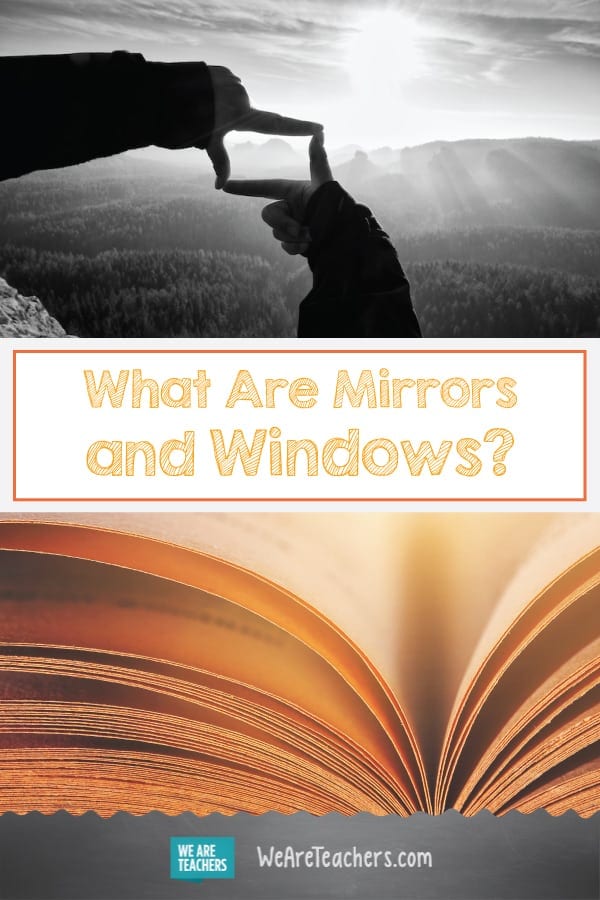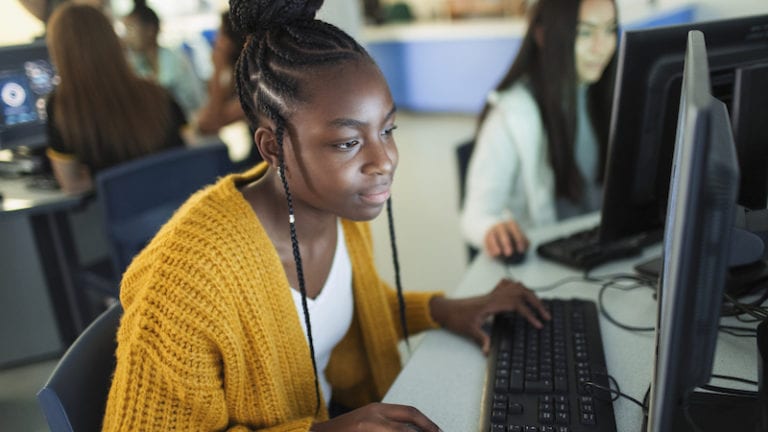A good teacher works hard to develop relationships with students in order to help them identify their place in the world. A great way to help children do this effectively is to introduce stories and materials that act as mirrors and windows.
You may have heard the term “windows, mirrors, and sliding glass doors” being used more frequently lately, especially when it comes to literacy. But what does this phrase mean?
What are windows, mirrors, and sliding glass doors?
The phrase “mirrors and windows” was initially introduced by Emily Style for the National SEED Project. Multicultural education scholar Rudine Sims Bishop furthered the concept when she coined the phrase “windows, mirrors and sliding glass doors” to explain how children see themselves in books.
A window is a resource that offers you a view into someone else’s experience. A sliding door allows the reader to enter the story and become a part of the world. A mirror is a story that reflects your own culture and helps you build your identity.
It is critical to understand that students cannot truly learn about themselves unless they learn about others as well.
Why are mirrors important?
When students read books where they see characters like themselves who are valued in the world, they feel a sense of belonging. The first step is gathering diverse resources for your classroom. The second step is building a culturally sensitive curriculum that teaches all the things required of any standard-based curriculum. Putting up mirrors for your students merely means setting up the context for them, not doing it in addition to regular learning. So be sure that you hand pick the books your students will use to learn the standards. Here are some tools to help to make sure that happens:
- What Is a Book Talk?: Your Guide to Making Them Work in the Classroom
- Kids Don’t Just Need Diverse Books … They Need Diverse Authors
[contextly_auto_sidebar]
Why are windows important?
Bishop goes on to explain that windows help us develop understandings about the wider world. Students need to learn about how other people conduct themselves in the world in order to understand how they might fit in. This is where you’ll need to diversify your materials so that, regardless of who is in your classroom, all students get to see a window into the range of possibilities out in the world. For some children, this may be the first time they are exposed to differences in culture, skin color, religion, and lifestyle. It’s important that their introduction is one of non-judgment and supportive acceptance. Let kids find some comparisons on their own before guiding them to see similarities and differences. Share lots of picture books with all age groups so you can provide rich information about a lot of topics in a short period of time.
Why are sliding glass doors important?
Sliding glass doors further expand on the concept of windows. Instead of just viewing another person’s culture or experience, glass doors allow readers to walk into a story and become part of the world. The goal here is to encourage reflection and action. Sliding glass doors result in a reader’s change of perspective.
Resources to include in your classroom.
Whether you’re encouraging your students to reach for a book as a window, mirror, or sliding glass door, these diverse lists will help guarantee you have ample material on hand.
- 32 Inspiring Books for Women’s History Month
- 20 #OwnVoices Books To Share With Middle and High School Kids
- 20 #OwnVoices Nonfiction Books for the Classroom
- 50 KidLit & YA Books With Black Protagonists
- 20 Books Bursting With Black Joy
- 30 Children’s Books with LGBT Characters
- 16 Books About Disabilities for All Students
- 15 Books By Indigenous Authors for the Classroom
Don’t relegate mirrors and windows to literacy.
There are lots of ways to use the concept of mirrors and windows in other subjects. Problem solving lends itself nicely to getting kids to look at things from their own perspective as well as that of others. In his article Mirrors & Windows Into Student Noticing , Higinio Dominguez shares how this inward/outward process of thinking helps children reverse their poor self-concepts about certain subjects.
Circle back around to give students time to reflect.
Handing kids great books about characters they can relate to is important, but it loses its impact without reflection. Building identity is a long process which requires regular reflection and shifting of thoughts and ideas. Don’t expect kids to know how to do this work on their own. Besides asking open-ended questions that provoke metacognition (thinking about your thinking), try using a Howard Gardner strategy from Harvard’s Project Zero: When you want kids to reflect, have them write: I used to think _____, but now I think ____.
With all new big concepts in education, this one will take consistency and practice. The reward, though, is a classroom of individual students who feel valued and are therefore more able to move forward into the world sharing their gifts. As teachers, we can’t hope to do more.
How can I learn more about mirrors and windows?
Deepen your understanding of what mirrors and windows are and how they can best be implemented in your classroom. Here are some great books and resources that can help:
- Untold Stories nonfiction series by Teacher Created Materials
- More Mirrors in the Classroom by Jane Fleming, Susan Catapano, Candace M. Thompson, and Sandy Ruvalcaba Carrillo
- Free Within Ourselves: The Development of African American Children’s Literature by Rudine Sims Bishop
- Teaching Tolerance
- White Teachers Need to See Color. Here’s Why.
We’d love to hear your thoughts around mirrors and windows, and how this thinking impacts your curriculum and library decisions. Come and share your thoughts in our WeAreTeachers HELPLINE group on Facebook.


